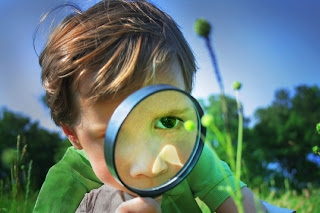This assignment is a great opportunity for us as
teachers to have a real experience of technology. I am sure most of us were
nervous about this blog assessment at the beginning. And through the journey we
have come across all kinds of problems caused by technology, for example, my
laptop just wouldn’t let me comment on my group members. Those could be the
downsides of technology which we had to conquer in order to get job done.
However, apart from all those, I have to admit that technology is incredibly efficient.
Blog enables us to share and communicate our ideas freely, to learn from each
other and support each other with our thoughts (Wong, 2008).
By reflecting on children’s technological
learning experience, I think I have broaden my vision. I now realized that
children are experiencing technology all the time, technology is all around us.
I have learnt that technology has a broad meaning compare to my prior
understanding. I have learnt that technology includes not only computers and
cameras, instead, technology is
about “helping people and solving problems”, and it is also a purposeful
activity which is intended to solve problem and achieve goals by using
strategies (Smorti, 1999, p.5).
By writing my own blog and reading other group
members’ blogs. I have realized that our centre wasn’t very sufficient in
digital technological facilities. However, that didn’t stop my pace from nurturing
children’s learning and using of technology. In practice, I am committed to creating opportunity for
children to explore digital technological device such as computer and camera.
From reading group members’ blogs, I have learnt some strategies to use when
supporting children with their technological learning. Such as encouraging
children from thinking creatively and experienment out their own thoughts. I
will use what I learnt from my team memebrs in my future practice to further foster
children’s technological learning.
Reading group members feedback is an interesting
thing to do. It is great to know how other people think about my thought and my
practice. Getting positive feedback from team members made me more confident
about implementing my thought and keeping on doing what I have been doing.
My group members have posted some really helpful comments which made me think
deeper about why I did what I did and how I could make my practice even better.
For example, under my blog about using cameras with children, Beth has brought up
a question to me – should we primarily teach children the skills of operating
technological device or inteade should we just provide the resources and step
back and let children explore on their own. This question really made me think
deeply, on one hand, I see children as competent and capable learners (Ministry
of Education, 1996), I believe that we should provide the opportunity for
children to explore and experiement in their own way. On the other hand, I also
agree with Vygotsky’s theory of Zone of Proximal Development which states that
children’s learning could be fostered with the help of more skilled person,
which in this situation could be educators like myself (Santrock, 2009). Thus,
I think what I am going to do is keep a balance of giving freedom to children’s
exploration and supporting children’s learning when appropriate.
Overall,
I am very glad to have this assignment as it helped me gaining a lot of
knowledge about the benefits of technology. In my future practice, I will
continue supporting children’s learning of no matter digital or non-digital technology.
Reference:
Ministry of Education. (1996). Te Whāriki, he whāriki mātauranga mo nga
mokopuna o Aotearoa: Early childhood curriculum. Wellington, New Zealand:
Learning Media.
Santrock, J.W. (2009). Lifespan development (12th
ed., International). Boston, MA: McGraw-Hill.
Smori, S. (1999) Technology in Early
Childhood. Early Education, 19, 5-10.
Wang, H. (2008). Exploring the educational use
of blogs in U.S. education. US – China Education Review, 5 (10), 34-37.





